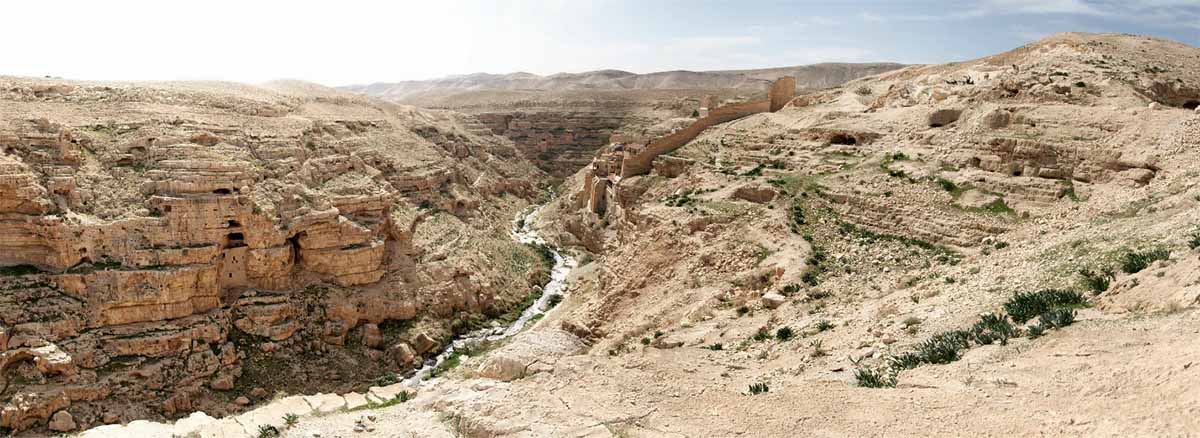Cave of Letters: Probably the Most Important Cave For Ancient Jewish History
The Cave of Letters is quite literally a cave of secrets. Rediscovered by archaeologists in the 1960s, its contents told of uprisings as well as everyday life in ancient Israel.
What at first appeared to be an unassuming cave located in a cliff face in the Judean desert actually turned out to be a perfectly preserved time capsule, full of letters and documents from the 1st and 2nd centuries. Archaeologists have worked hard to pick apart these letters and the other items found in the cave in order to understand who used the cave and why.
Where is the Cave of Letters?
The Cave of Letters is located in the Judean desert roughly 25 miles (40 kilometers) south of Qumran, near the border of Israel and Jordan, and on the western shore of the Dead Sea.
The cave sits in the Nahal Hever ravine, which is not far from where the famous Dead Sea Scrolls were discovered. A Roman siege camp was discovered above the site, as well as another camp on the southern side of the ravine.
- Dead Sea Scroll Fragments Discovered In Judean Desert Cave
- Immense 1,900-Year-Old Slab Found Underwater Names Forgotten Roman Ruler During Bloody Jewish Revolt
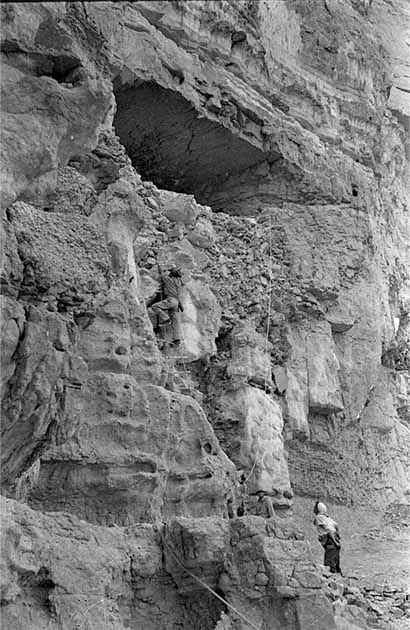
The Cave of the Letters is the name of a cave in Nahal Heber in the Judean Desert, where important finds from the days of Bar Kochba's rebellion were discovered, including letters written by Bar Kochba to the people of En Gedi (Israel Antiquities Authority / CC BY-SA 4.0)
The Discovery of the Cave of Letters
It is thought that the Bedouins of the Ta’amireh tribe were aware of the cave before scholars came across it. However, the cave was first brought to the attention of academics in 1953. Archaeologists heard that some letters supposedly written by the Jewish revolt leader Simon Bar-Kokhba had been sold.
It turned out that these letters had been located in a canyon called Wadi Murraba, so, in an effort to find additional valuable documents, well-known Israeli archaeologist Yigael Yadin went looking for more. Yadin already had a reputation as an archaeologist, and he had received awards for his doctoral thesis on the translation of the Dead Sea scrolls.
Yadin and his team searched the area, accompanied by the Israeli Defense Forces. The Cave of Letters was not the only site in the area that Yadin would work on. He had excavated Tel Megiddo, Masada, the Qumjarn Caves and Hazor. This particular cave, however, was discovered in an urgent attempt to prevent any more of the contents of the caves near the Dead Sea from being looted by treasure hunters.
- Two Coins Found in Israel Prove That Jewish Revolt History is Wrong!
- New Dead Sea Scrolls Discovered: Archaeologists Excited to Unearth Two New Fragments in the Cave of Skulls
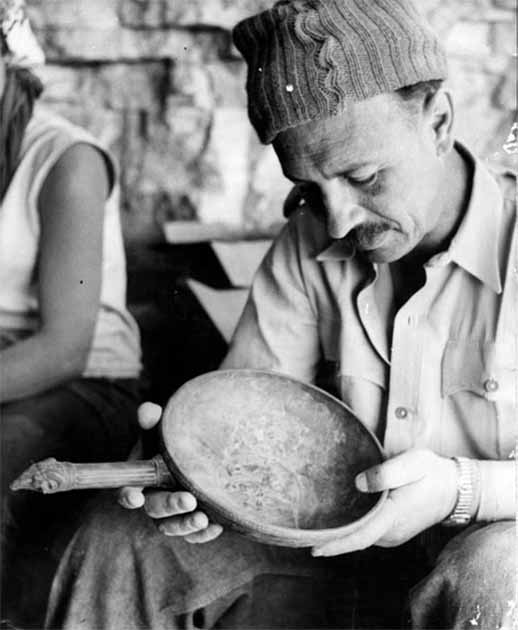
Archaeologist Yigael Yadin with an incense shovel, the Cave of Letters, the Judean Desert, 1960 (Public Domain)
Excavations of the Cave of Letters
Yadin’s excavation of the site began in the 1960s. The process was not easy; the cave is dangerous to enter, as it requires a 50 foot (15.24 meter) climb up the rock face.
During his excavations, Yadin made a number of staggering discoveries. Inside the cave, the excavation team found the largest collection of ancient personal correspondence and personal documents in the form of papyrus letters ever found in Israel.
Not only were letters discovered, but human remains too. The team found human skulls, as well as bones alongside objects from everyday life, thought to have been tied to Bronze Age rituals. They also found complete sets of clothes worn by Jewish people in the 1st and 2nd centuries, as well as a child’s sandal.
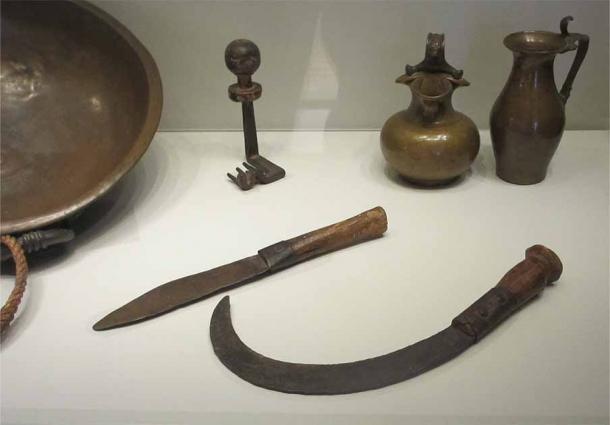
Some of the everyday objects recovered from the Cave of Letters in the Judean Desert. Sickle and knife (iron and wood), key, jars (copper). Nahal Hever, 132-135 AD (Chambri / CC BY SA 3.0)
There was a skeleton found covered in a colorful mat, as well as that of a child dressed in a tunic. These materials are thought to be from around 135 AD, and therefore are some of the earliest known from the Roman period. These clothes have been influential for archaeologists and historians as they demonstrate the type of dyes and the weaving material used by people during this period.

Some of the textiles recovered from the Cave of Letters (Chamberi / CC BY SA 3.0)
In the early 2000s, another archaeologist and his team returned to the Cave of Letters. The leader of this expedition, named the John and Carol Merill Expedition, was Richard Freund, then professor of Jewish history at the University of Hartford.
Alongside a team made up of international archaeologists, Freund made even more discoveries. Freund noted that the cave had two entrances that both opened onto the sheer cliff face. The cave was made up of three chambers, which were interconnected by narrow passages. The entire cave complex was said to cut about 300 yards (274 meters) deep into the cliff.
Because of the improvement in technology by the time of Freund's expedition, he was able to explore even further than Yadin had. Freund and his team were also able to clear away a lot of the rubble on the cave floor which had appeared because of centuries of earthquakes. In some areas, it was said that this rubble was 15 feet (4.57 meters) thick.
Freund was able to do such extensive research thanks to ground-penetrating radar and electrical resistivity tomography. This allowed the team to look under the rubble and see what Yadin had been unable to.
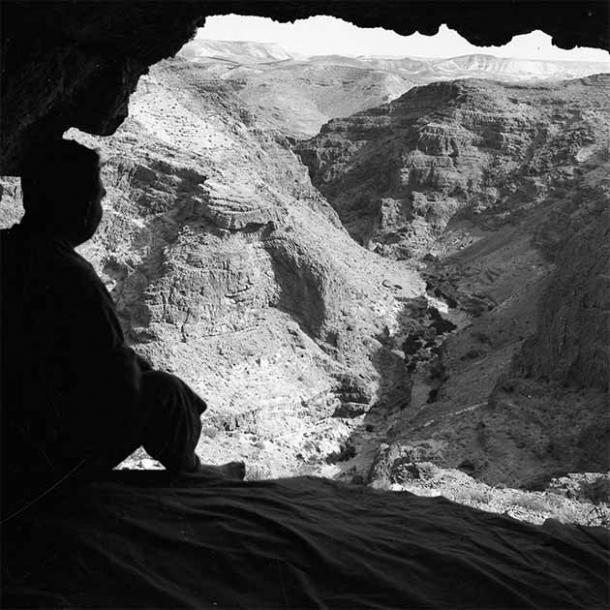
Looking out from the Cave of Letters, Judean Desert (Israel Antiquities Authority)
The Cave of Letters Collections
As stated above, several collections of detailed ancient letters were located in the cave. Most of the letters were written in the second century in Aramaic or Hebrew, but there are two written Greek. They are often addressed from the Jewish leader Bar Kokhba to his subordinates named Yehonathan and Masabala, who were located in Ein-Gedi.
These letters are vital to understanding the history of this region as Bar Kokhba, led the Third Jewish Revolt against the Romans. The letters contain spelling errors, but they provide interesting examples of spoken Hebrew.
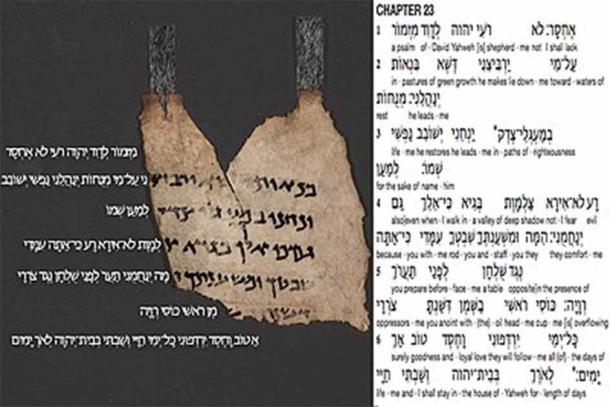
Image of a fragment of one of the biblical manuscripts found in the Cave of Letters (KetefHinnomFan / Public Domain)
The letters contain military orders which were signed by Bar Kokhba himself. There were also documents found which recorded land transactions. There was one in particular that described the leasing of En-Gedi.
One letter recorded Bar Kokhba ordering his subordinates to confiscate wheat from a man and bring it to him. He threatened to punish the men if they fail to do so. The letter went on to demand that any man from Tekoa be given shelter.
Another letter told the story of a man named Eleazar bar Hitta, who is thought to have been a wealthy landowner living in En-Gedi. The letter ordered the arrest of the man because he had not cooperated with Bar Kokhba. His wheat and fruit were ordered confiscated, alongside his spice fields which were to be confiscated but protected.
Another letter contained a request by Bar Kokhba to a man named Yehuda bar Menashe to provide food for the feast of Sukkot. Some scholars think this simple letter actually showed distrust between Bar Kokhba and his direct subordinates Yehonathan and Masabala because they were not mentioned.
A particularly interesting letter is one of the two written in Greek. This one was written by a man named Soumaios, thought to have been a Nabataean. Its contents concerned the same food issue. It has gained the interest of scholars because it might demonstrate that it was not just Jewish people who were involved in Bar Kokhba’s revolt.
It is not just the written collections that tell of Bar Kokhba’s success. Bar Kokhba coins were also found in the cave, some with the inscription ‘for the freedom of Jerusalem’ written on them.
![Coin from Bar Kochba Revolt, 132-135 AD. Grape bunch on vine; “Shim‘on” in Hebrew around / Palm frond; “for the freedom of Jeru[salem]” in Hebrew around. (Classical Numismatic Group / CC BY SA 3.0)](https://www.ancient-origins.net/sites/default/files/styles/large/public/Kochba.jpg?itok=pySKY2-I)
Coin from Bar Kochba Revolt, 132-135 AD. Grape bunch on vine; “Shim‘on” in Hebrew around / Palm frond; “for the freedom of Jeru[salem]” in Hebrew around. (Classical Numismatic Group / CC BY SA 3.0)
At that point in history, the Judean Desert was part of the Roman Empire; however, the Jews were treated harshly and unfairly by the Romans. This, therefore, makes these letters extremely important to historians and archaeologists who work on understanding the lives of Jewish people and the rebels in that period.
The Cave of Letters’ Profile of Babatha
One of the most influential collections of letters found in the cave was a collection that had once belonged to a woman named Babatha. Babatha was said to have lived in a port town named Maoza, and her documents tell of her life in vivid detail.
Babatha seems to have been an upper-middle-class Jewish woman who lived at some time during the second century. Her documents are not only personal documents, but provide information on the workings of Roman bureaucracy and its legal systems.
Babatha was born in about 104 AD and eventually went on to inherit the date palm orchard owned by her father. She married in 124 AD to her first husband, but was eventually widowed and left alone with her son, Jesus. In 125 AD, she remarried, this time to a man by the name of Judah, who was already father to a teenage daughter.
Among Babatha’s documents are papers which describe loans that Judah had taken from Babatha. This is particularly telling as it demonstrates that Babatha was in control of her own money, a practice that was not common for women at that time. It shows she had a limited sense of power in a world which was heavily male dominated. The documents show that Babatha was paid back in full when Judah died, and she became the owner of his estates.
There are also legal documents concerning her son from her first marriage. This seems to be concerning guardianship over him. There are also papers which tell of a dispute between Babatha and Judah’s first wife, who was named Miriam. The two seem to be fighting over Judah’s estates.
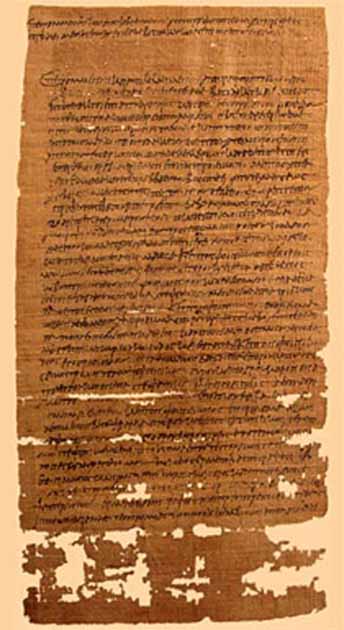
Registration document for four date orchards owned by Babatha, a 2nd century Jewish woman. One of the 35 separate papyrus scrolls belonging to her that were found in the Cave of Letters. (Public Domain)
What was the Cave of Letters Used For?
It is hard to tell exactly what the Cave of Letters was used for, but archaeologists have their theories. The most popular of these is that it was used as a hiding place for Jewish refugees who were escaping from the Romans.
It is thought that perhaps Babatha was in the area when the Bar Kokhba revolt occurred in 132 AD. Because her documents were found alongside twenty skeletons, it is sensible to assume that she may have been killed in the cave.
Despite the violence occurring around them, the people to whom the twenty skeletons belonged to did not die of violent means. There was no violent trauma on any of the skeletons, which would imply that they died of starvation.
Another factor that has led archaeologists to believe that this was a hiding place is the fact that there are signs of animals, as well as cooking in the cave. They found, for example, a piece of an oven.
In conclusion, the Cave of Letters is an interesting and fascinating time capsule which can provide a wealth of information. Not only can it tell us about the administrative history of the region, but it also tells of the everyday lives of the people who were in the area.
Top image: The Judean desert has numerous caves, which provided refuge for Jewish resistance to Roman rule. The Cave of Letters got its name from the recovered cache of documents related to the Bar Kochba Revolt Source: Pavel Bernshtam / Adobe Stock
By Molly Dowdeswell
References
Cave of Letters. n.d. Center for Online Judaic Studies. Available at: http://cojs.org/cave-of-letters/
Green, D. May 12, 2015. This Day in Jewish History: 1960 Archaeologist Announces Findings 2,000-Year-Old Letters by Bar Kochba in Desert Cave. Haaretz. Available at: https://www.haaretz.com/jewish/2015-05-12/ty-article/1960-bar-kochba-letters-found/0000017f-dc33-db5a-a57f-dc7bf4a60000
Irving, J. May 7, 2013. Cave of Letters. World History Encyclopedia. Available at: https://www.worldhistory.org/Cave_of_Letters/
Norman, J. n.d. In the ‘Cave of Letters’ Discovery of Papyri Recording Israel’s Second Century Revolt Against Roman Rule. Jeremy Norman’s History of Information. Available at: https://www.historyofinformation.com/detail.php?id=4038
















